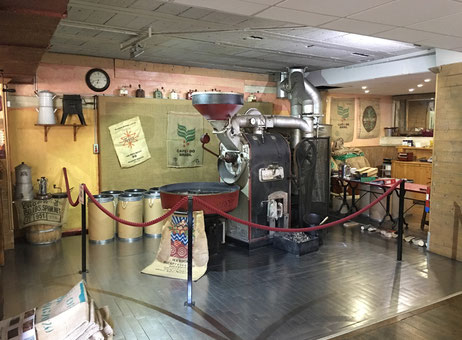The most exciting part of becoming an artisan coffee roaster is to pick your roaster. But like any purchase, there are a few things to consider before buying it.
If you’re still hesitating between a new machinery or a used one, check out our article “Advantages and disadvantages of buying new machinery”. It will help you a lot.
In this article, we’re going to help you make the right decision thanks to 5 important points.
1. Know Your Budget Options
Probably one of the most important question to ask yourself. Do you have a clear investment plan for this coffee roaster? Do you know how much money you are ready to spend on it?
The machine itself has a cost, but don’t forget extra-cost such as transport, maintenance, tax breaks in your country, installation costs, including extraction, electrical costs (particularly if you need 3-phase electricity installed), and proper lighting, so that you can see the roast color clearly.
Depending on if your budget is tight or not, are you planning to buy outright or lease the roaster? Would you prefer a brand new coffee roaster or a used coffee roaster?
These are other questions that only you have the answers.

Probat Wood and Coal Coffee roaster – available now on Exapro.com
2. Know the Size of Your Future Coffee Roaster
Think about the size of the roaster you think you’re going to need for your business.
Make sure you have the required space to welcome your future roaster. And once again, not just the roaster itself but all other possible things that could be added around the machine to facilitate the production or increase the productivity.
3. Ease of Use
You want intuitive controls and fluidity in your daily operations, isn’t it? The control of the flame and airflow on the fly should be without any main difficulties.
One important thing to recommend: make sure the readouts will be clear and within your line of sight when roasting.
Don’t forget about physical practicalities, either. Will you need a footstool to get high enough to tip the green beans into the hopper? Is it going to be easy enough to vacuum out the coffee chaff (a daily task)?
4. Prioritize Features & Functions
Two things are essential: the control of the flame and the control of the airflow.
You should also consider connectivity and a variable drum speed.
What about if later on, you want to connect roast profiling software, such as Artisan or Cropster, to it?
You then have to check whether your machine has data outputs (USB or Ethernet) and whether the software you plan to use is compatible.
It’s good to know that machines with cutting-edge electronics will cost you more than those with more conventional components.
If you’re tempted by it, make sure you understand how it’ll make you a better roaster. However, always prioritize capacity over gadgets.
5. Perform a Maintenance
Performing a maintenance is crucial and will save you a lot of money and make you more familiar with your coffee roaster. You need to look after it as you would look after yourself.
For instance, you’re having the gearbox out of it. A knocking noise is plaguing it. You have to reassure yourself that your roaster isn’t slowly tearing itself apart from the insides. You could an engineer to investigate, but learning how to do it yourself could be a better option and cost-saving.
Sometimes, you’re going to have to get your hands dirty with the grease and oil from the inner workings of your machine.
Many coffee roasters are designed to be taken apart and put together with simple workshop tools. If you’re not confident enough to do this, or your machine isn’t designed for easy maintenance, don’t hesitate to find a local mechanical engineer and offer him/her a coffee.
Thank you for reading our articles, stay informed about the industrial world and Exapro by following us on Exapro Hub, Facebook, Twitter, and LinkedIn.



